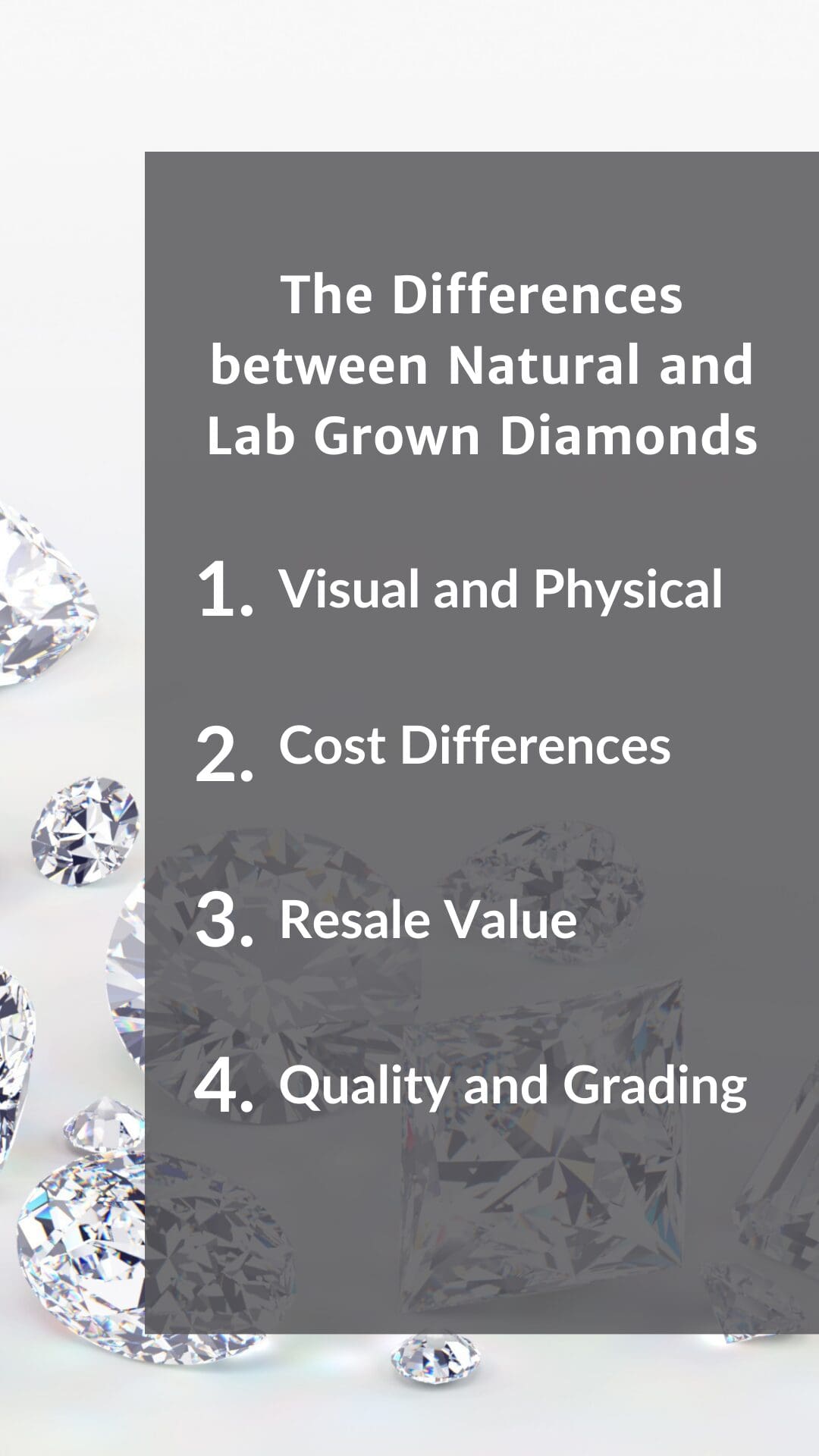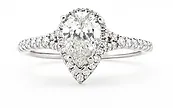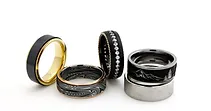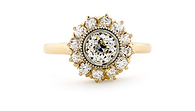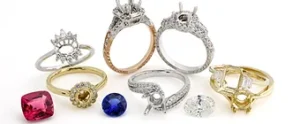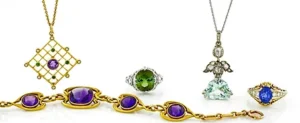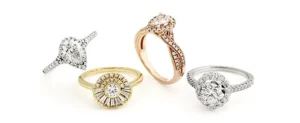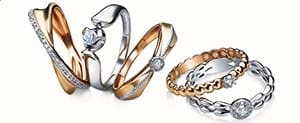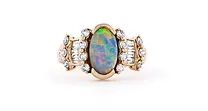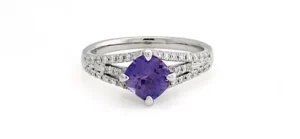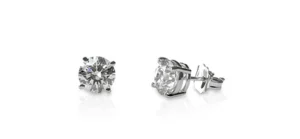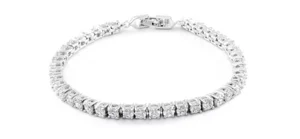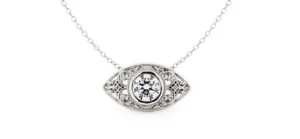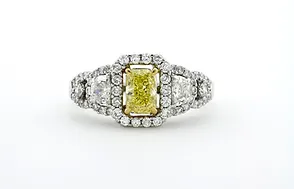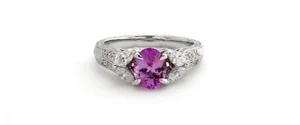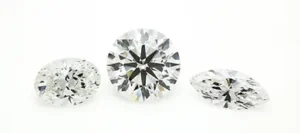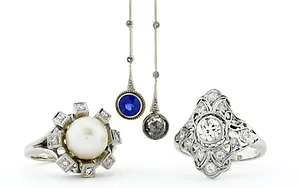When it comes to choosing an engagement ring, the decision often extends beyond the style and design to the type of diamond it holds. One of the most common questions today’s buyers have is, “Are lab grown diamonds real?” Understanding the differences between natural and lab grown diamonds can help you make an informed choice that fits your values and budget. This guide will explain the key differences and similarities, helping you decide which type of diamond is right for you.
What Are Natural Diamonds?
Natural diamonds are formed deep within the Earth’s mantle over billions of years through a combination of high pressure and high temperature. They are brought to the surface through volcanic eruptions and then mined from various locations around the world. Each natural diamond is unique, shaped by the intense conditions under which it formed.
- Rarity: Natural diamonds are rare, adding to their value and allure.
- Certification: Often accompanied by a certification that verifies their natural origin and quality.
- Durability: Known for their unmatched hardness and durability, they are ideal for everyday wear.
What Are Lab Grown Diamonds?
Lab grown diamonds, also known as synthetic or cultured diamonds, are created in controlled laboratory environments that replicate the natural conditions required to form diamonds. These diamonds are produced using one of two methods: High-Pressure, High-Temperature (HPHT), or Chemical Vapor Deposition (CVD).
- Environmental Impact: Generally, they have a smaller environmental footprint compared to mined diamonds.
- Affordability: Typically more affordable than natural diamonds of comparable size and quality.
- Traceability: It is easier to trace their origins and ensure ethical production practices.
Visual and Physical Differences
To the naked eye, natural diamonds and lab grown diamonds appear identical. Both types of diamonds have the same physical, chemical, and optical properties, making them indistinguishable without specialized equipment.
- Optical Brilliance: Both types of diamonds offer the same level of brilliance, refractive index, and dispersion, which contribute to their ability to sparkle and reflect light beautifully.
- Durability and Wear: As both share a Mohs hardness rating of 10, they are equally suited for daily wear and resistant to scratches.
- Verification Techniques: Distinguishing between the two often requires detailed spectroscopic analysis or infrared devices used by gemological labs, as conventional jewelers’ tests cannot differentiate them.
Environmental and Ethical Considerations
One significant difference between natural and lab grown diamonds is their environmental and ethical impact. Here’s what to know:
- Natural Diamonds: Mining natural diamonds often results in substantial ecological damage, including soil erosion, deforestation, and habitat destruction. Ethically, mining in conflict zones can lead to human rights abuses and the funding of armed conflicts, known colloquially as “blood diamonds.”
- Lab Grown Diamonds: Producing diamonds in a lab setting significantly reduces environmental impact, using less water and creating fewer emissions. Ethically, they are favored for providing a traceable and conflict-free origin, appealing to ethically conscious consumers.
- Consumer Choice: With growing awareness of sustainability and ethical production, lab grown diamonds are increasingly chosen by consumers looking for eco-friendly and socially responsible jewelry options without sacrificing quality or beauty.
Cost Differences
Cost is often a deciding factor when considering the purchase of a diamond. Thanks to the efficiencies of their production processes, lab grown diamonds generally offer a more affordable alternative to natural diamonds.
- Production Efficiency: Lab grown diamonds can be produced in a matter of weeks in high-tech labs, significantly reducing production costs compared to the billions of years it takes to form natural diamonds.
- Market Pricing: While natural diamonds are typically more expensive due to their rarity and the extensive resources required to mine them, lab grown diamonds are usually 20-40% cheaper.
- Economic Factors: The ability to produce lab grown diamonds on demand also contributes to their lower cost, making them a budget-friendly option for consumers.
Resale Value
The resale value of diamonds, which can vary significantly between natural and lab grown types, is largely influenced by market perceptions and rarity.
- Perceived Rarity: Natural diamonds often retain a higher resale value due to their perceived rarity and established presence in the market.
- Market Dynamics: Lab grown diamonds tend to have a lower resale value, reflecting their relative abundance and the capability of producing more on demand.
- Investment Perspective: Consumers considering diamonds as an investment might prefer natural diamonds for their stable value over time.
Quality and Grading
Both natural and lab grown diamonds are subject to the same rigorous grading standards, ensuring that quality and craftsmanship are consistently maintained across both types.
- Uniform Standards: The 4 Cs (cut, color, clarity, and carat weight) are used to grade both types of diamonds, ensuring a standardized measure of quality.
- Reputable Grading: Grading reports from esteemed institutions like the Gemological Institute of America (GIA) and the International Gemological Institute (IGI) are available for both natural and lab grown diamonds.
- Transparency and Trust: These consistent grading practices help maintain transparency in the diamond industry and build trust among consumers purchasing either type of diamond.
Popular Myths about Lab Grown Diamonds
There are several myths surrounding lab grown diamonds that can influence purchasing decisions. Let’s debunk a few of them:
- Myth: Lab grown diamonds are not real diamonds.
- Fact: Lab grown diamonds are physically and chemically identical to natural diamonds.
- Myth: Lab grown diamonds are inferior in quality.
- Fact: Lab grown diamonds can match or even exceed the quality of natural diamonds.
- Myth: Lab grown diamonds are not as durable.
- Fact: Both lab grown and natural diamonds share the same hardness and durability.
Find Your Perfect Diamond at FWC Jewelers Today!
So, are lab grown diamonds real? Absolutely. Both natural and lab grown diamonds offer unique benefits and considerations. Whether you value the traditional allure and historical significance of natural diamonds or the modern, ethical appeal of lab grown diamonds, the right choice depends on your personal priorities and circumstances.
Ready to find the perfect diamond for your engagement ring? At FWC Jewelers, we offer both natural and lab grown diamonds, allowing you to explore a variety of options. Start your journey with us today and discover the beauty and brilliance of diamonds that perfectly match your preferences. Visit FWC Jewelers and make a choice that feels right for you.
FAQs: Are Lab Grown Diamonds Real?
Is there really a difference between lab grown and natural diamonds?
What are the disadvantages of lab grown diamonds?
Can a jeweler tell the difference between lab grown diamonds?
Is it worth buying lab grown diamonds?
